National Gender Statistics report 2019
The 2019 the National Gender Statistics Report provides the updated sex-disaggregated data in twelve fields: Population and Youth; Education; Health and Nutrition; Economic Activity and time use; Poverty & Social Protection; Justice & Human rights; Environment and Natural Resources; Decisionmaking and Public life; Infrastructure, ICT and Media; Trade and Business and Industry; Agriculture, Livestock and Forestry, and lastly the Income and Access to Finance.
Labour Force Survey 2017, Thematic Report, Gender
This report is the result from analysis of the August Labour Force Survey 2017 findings. It sets out a broad overview of trends and gender gaps, including gaps in labour force participation rates, employment-to-population ratios and unemployment rates, along with differences in labour market status and the type of activities that men and women perform in the labour market, hours spent in paid and unpaid work and sectoral and occupational segregation. It also discusses the extent to which these factors account for gender gaps in wages and social protection.
EICV5_Thematic Report_Gender
In this report, the majority of tables provide results for both EICV4 and EICV5 and highlight developments over time, as well as different patterns across provinces in Rwanda, both in urban and rural areas. Emphasis has been placed on including disaggregated results for men and women and male and female-headed households to explore gender-related aspects in key social and economic characteristics of persons and households in Rwanda, as well as other types of disaggregation, such as age group, type of habitat, etc. Where necessary, districts tables have been provided in annex.
National Gender Statistics report 2016
This third edition of the National Gender Statistics Report provides the updated sex-disaggregated data in twelve fields: Population and Youth; Education; Health and Nutrition; Economic Activity and time use; Poverty & Social Protection; Justice & Human rights; Environment and Natural Resources; Decisionmaking and Public life; Infrastructure, ICT and Media; Trade and Business and Industry; Agriculture, Livestock and Forestry, and lastly the Income and Access to Finance.
EICV 4 THEMATIC REPORT - Gender
The six thematic reports in this series are: (i) Economic Activity; (ii) Utilities and Amenities (water/sanitation/energy/housing/transport/ICT); (iii) Environment and Natural Resources; (iv) Gender; (v) Youth; (vi) Education.
National Gender Statistics report 2014
The National Institute of Statistics of Rwanda (NISR) in collaboration with the Gender Monitoring Office (GMO) and UN Women through ONE UN/ Delivering as One (DaO), has embarked on establishing and strengthening a comprehensive Gender Statistics Framework (GSF) resulting in Gender Statistics Report that reflects the status of gender equality in key development sectors in 2014.
RPHC4 Thematic Report: Gender
The results of the 2012 Census show that Rwanda had a total resident population in that year of 10,515,973, of which 5,451,105 were females, representing 52% of the population. There were around 386,000 more
females than males. At national level, women outnumbered men in rural areas (53%), while the opposite was the case in urban areas (where 49% are female).

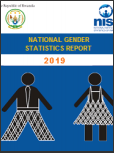
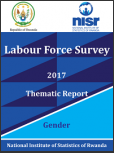
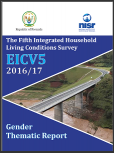
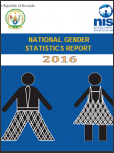
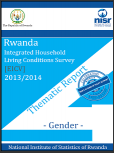


![[title]](https://statistics.gov.rw/sites/default/files/styles/pub_small_112x150_/public/publications/807ae8e7-79cd-44b2-af01-9e0ca732aabe/cover-women.jpg?itok=SX_YK4sW)
![[title]](https://statistics.gov.rw/sites/default/files/styles/pub_small_112x150_/public/publications/7f13d100-526b-4d15-af69-679d845ca305/kigali_cover.jpg?itok=7CCcm3I-)
![[title]](https://statistics.gov.rw/sites/default/files/styles/pub_small_112x150_/public/publications/12e6052b-e37a-4244-92b3-3be581d98b54/west_cover.jpg?itok=97WRolLA)